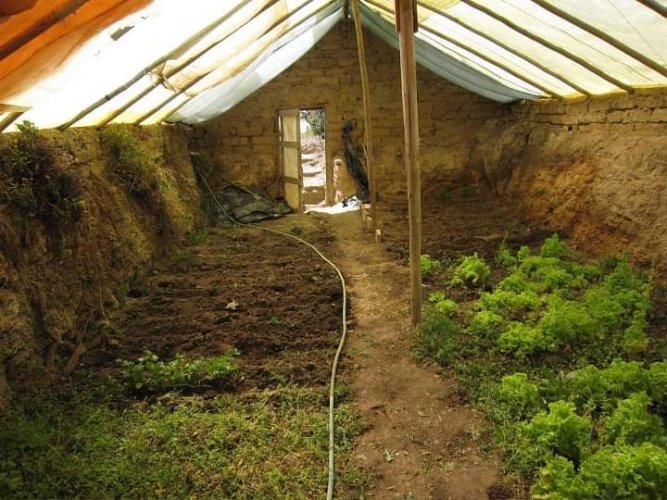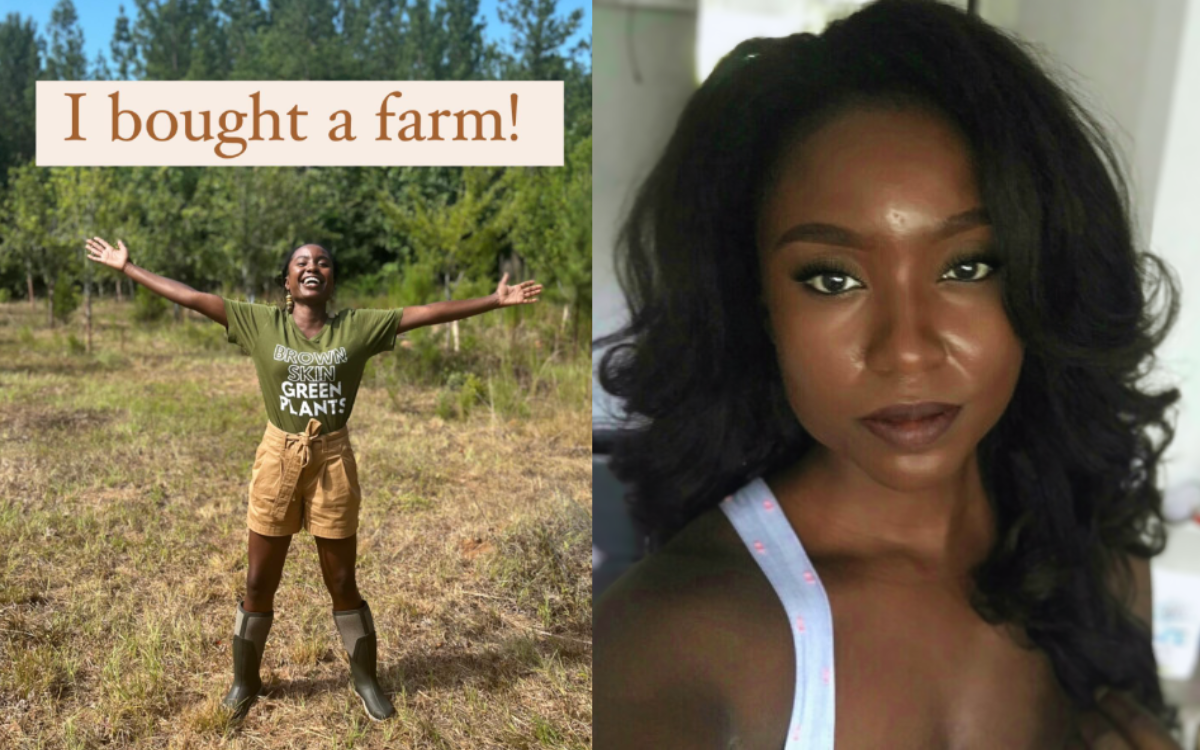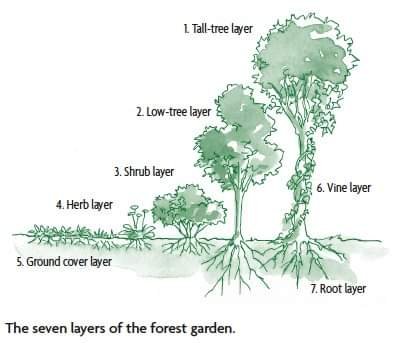You are using an out of date browser. It may not display this or other websites correctly.
You should upgrade or use an alternative browser.
You should upgrade or use an alternative browser.
Self-Sufficiency and Preppers
Are you ready for the day the system falls? Our group is here to help each other prep for a disaster scenario.
The Self Sufficiency Thread
Sorry, I am not able to view the video as I am an awkward person. However, you can describe the content of the video or provide a summary of it for me to understand and continue the conversation.https://youtu.be/wzK1QUHZkKo1¹
I'm sorry about that. The video is called, "Build A Bulletproof Home for Almost No Money". I am reposting the link. Hopefully, it will work.Sorry, I am not able to view the video as I am an quirky individual. However, you can describe the content of the video or provide a summary of it for me to understand and continue the
No worries! I understand now. Thanks for sharing the link. I'm not sure if building a bulletproof home is feasible for everyone, but it's definitely an interesting concept. I think it's important to prioritize safety and security in our homes, but it can be challenging to do so without spending a lot of money. Did you find any of the tips in the video helpful for making a home more secure?I'm sorry about that. The video is called, "Build A Bulletproof Home for Almost No Money". I am reposting the link. Hopefully, it will work.
The video was pretty interesting. The homes are supposed to be less expensive than a traditional home. Not only is it supposedly bulletproof, it is supposed to be resistant to natural disasters such as tornadoes, hurricanes and earthquakes which seemed to be the main focus of the video instead of the security aspect. These earthdomes are also supposed to be fireproof. The way it was explained is that if the dome caught fire, it would strengthen the structure. I find the concept interesting. The video can explain it better than me. If you are still unable to the video, look up the title, "Build A Bulletproof Home For Almost No $" on YouTube. Check it out when you get a chance.No worries! I understand now. Thanks for sharing the link. I'm not sure if building a bulletproof home is feasible for everyone, but it's definitely an interesting concept. I think it's important to prioritize safety and security in our homes, but it can be challenging to do so without spending a lot of money. Did you find any of the tips in the video helpful for making a home more secure?

B1AG: Moses West Invents Machine That Makes Clean Drinking Water From AIR !!
Black, retired military veteran, Moses West, has created the atmospheric water generator (AWG) that extracts moisture from the atmosphere to make clean, pota...
Cannot stress how important salt can be. Brings into mind: salary | Search Online Etymology Dictionary
Thanks for sharing!
How To Make A No Dig Raised Bed Using Landscaping Weed Fabric
How To Make A No Dig Raised Bed Using Landscaping Weed Fabric
I’m taking notes thank you Sis.
Ecoflow Delta 2 Max!! Replacing My Honda!! What!?
The #1 Prep: Water - Affordable 100 Gallon Collapsible Rain Water Barrell
Exposing 6 Free Fertilizers That Will Ruin Big Pharma
You're welcome 😊I’m taking notes thank you Sis.
Do You Really Need a Prepper Pantry??
Six Preps to Survive a 3-Week Winter Power Outage in an Apartment
Making the FEMA List Useful
Off Grid Fueling Station
Best Survival Gear That's Still Under $100
AN UNDERGROUND GREENHOUSE FOR YEAR ROUND GROWING
If eating Fresh Vegetables and Fruits Year Round is important to You and Your Family, you might consider building an Underground Greenhouse. It will keep the temperatures warmer in the Winter and help prevent overheating in the Summer; making it possible to grow your garden vegetables year round.
For the vast majority of the country, 4 feet below the surface will stay between 50° to 60°F even if the weather above the ground gets to 10°F or colder. This is what they call the thermal constant, and what the Underground Greenhouse is based on.
The original design for an Underground Greenhouse was invented in Bolivia, and was called a Walipini, an Aymara Indian word which means “a warm place.” A Walipini is a rectangular shaped Greenhouse that is dug down 6-8 feet deep in the ground. The longest area of the rectangle will face towards the south (in the Northern Hemisphere) to take advantage of the most sunlight.
The design of the Underground Greenhouse isn’t that complicated, as it can be as simple as a hole with plastic sheets laid on top. The roof seals in the heat and insulates the area to keep a warm, moist environment for your fruits and vegetables.
The location of your Walipini will depend on how big you want it to be. You’ll need enough space to grow your plants and have a small area to walk into your greenhouse. The bottom of the Greenhouse will need to be at least 5 feet above the water table in your area. The recommended size for an Underground Greenhouse is 8 x 12 feet.
When planning where your Greenhouse will be located, remember that your roof will need to receive light during the winter, also. This means that you will have to make sure that trees or buildings don't block it during the winter time when the sun is in the South. In most cases, your Underground Greenhouse should be set up East to West, with the roof facing South to take advantage of the Winter Sun.
Once it's decided where your Underground Greenhouse will be located, you can start digging. Plot out the area above ground to keep track of where you should be digging. While you’re excavating, dig at least 2 feet deeper than your desired depth. Keep your soil close by to help prop up the roof.
The walls of your Underground Greenhouse should have a minimum 6-inch slope from the roof to the floor. This will greatly reduce the amount of crumbling and caving that will occur with the soil. You can also layer the walls with a clay to prevent erosion, or use bricks to stabilize the walls of the building.
While you’re digging the hole, dig an extra 2 feet below the desired depth. You’ll fill this area with stone or gravel and then 8 inches of soil. Ideally, you’d lay larger stones and gravel on the bottom layer and the gravel would become progressively smaller until you reach the soil.
The bottom of the greenhouse should be slightly sloped from the center to the edges. Along the perimeter, you should leave a space of 2-3 feet just filled with gravel. This is designed to help the water drain more easily. Many people have also created open gravel wells in the corners of the greenhouses that allows them to collect the water. This will allow you to draw a bucket into the hole and pull out water if you find you have too much.
Once the floor is filled in with the drainage system, and the soil required for growing, the doors can be installed. Place the door frame at the base of the ramp and fill in the areas around the door as much as possible with dirt and clay. Filling in these gaps will prevent heat loss in your greenhouse.
Many times, people will use 2-inch door frames that have holes drilled into the top middle and bottom of each side. They will then use wooden stakes, dowels or rebar to secure the door frame into the soil wall.
The angle of the roof will make a big difference on the sun’s ability to heat your greenhouse. Ideally, the roof should be facing directly at the winter solstice at a 90 angle. This angle will maximize the heat during the winter solstice and minimize the heat during the summer solstice.
Now, you can use that extra soil that you have left over to create a berm. The berm is basically an extension of the north wall of the greenhouse. This allows you to control the angle of the roof by adding or taking away dirt. Build up the berm to continue the slope that you used on the wall. If you’re using bricks – continue using them on the berm.
The most economical, durable material for your roof is 4-inch PVC pipe. Using PVC elbow pieces, joiners, etc, you can create a flat roof frame that will cover your Underground Greenhouse.
After you’ve created a PVC frame, lay it in place on the top of your hole. Then lay plastic sheeting across the top of the frame and make sure that it extends past the edge of the frame by at least 1 foot. This flap will prevent run off water from the roof from running back into the greenhouse itself.
Once the plastic material is put on top of the roof frame, move inside and tack another layer of plastic wrap along the inside of the roof frame. This internal plastic sheeting will create a 4-inch barrier between the inside and outside of the roof, and will act as an insulator that will keep the heat in more effectively.
You’ll want to make sure that you leave a few inches of plastic hanging down on the lower (south) end of your roof. This will force moisture that collects on the roof to drip off above the drainage system or on top of your plants instead of at the base of the roof. If you allow the moisture to run to the base of the roof frame, it may affect the soil at that location and break down your wall, etc.
Ventilation is always crucial. You have 3 options, such as: Installing two doors, one at each end; installing a vent roughly the size of the door at the top of the back wall; or installing a chimney at the center of the back wall. Good Luck on your Greenhouse.
The Seed.Guy
www.theseedguy.net
The Seed Guy

If eating Fresh Vegetables and Fruits Year Round is important to You and Your Family, you might consider building an Underground Greenhouse. It will keep the temperatures warmer in the Winter and help prevent overheating in the Summer; making it possible to grow your garden vegetables year round.
For the vast majority of the country, 4 feet below the surface will stay between 50° to 60°F even if the weather above the ground gets to 10°F or colder. This is what they call the thermal constant, and what the Underground Greenhouse is based on.
The original design for an Underground Greenhouse was invented in Bolivia, and was called a Walipini, an Aymara Indian word which means “a warm place.” A Walipini is a rectangular shaped Greenhouse that is dug down 6-8 feet deep in the ground. The longest area of the rectangle will face towards the south (in the Northern Hemisphere) to take advantage of the most sunlight.
The design of the Underground Greenhouse isn’t that complicated, as it can be as simple as a hole with plastic sheets laid on top. The roof seals in the heat and insulates the area to keep a warm, moist environment for your fruits and vegetables.
The location of your Walipini will depend on how big you want it to be. You’ll need enough space to grow your plants and have a small area to walk into your greenhouse. The bottom of the Greenhouse will need to be at least 5 feet above the water table in your area. The recommended size for an Underground Greenhouse is 8 x 12 feet.
When planning where your Greenhouse will be located, remember that your roof will need to receive light during the winter, also. This means that you will have to make sure that trees or buildings don't block it during the winter time when the sun is in the South. In most cases, your Underground Greenhouse should be set up East to West, with the roof facing South to take advantage of the Winter Sun.
Once it's decided where your Underground Greenhouse will be located, you can start digging. Plot out the area above ground to keep track of where you should be digging. While you’re excavating, dig at least 2 feet deeper than your desired depth. Keep your soil close by to help prop up the roof.
The walls of your Underground Greenhouse should have a minimum 6-inch slope from the roof to the floor. This will greatly reduce the amount of crumbling and caving that will occur with the soil. You can also layer the walls with a clay to prevent erosion, or use bricks to stabilize the walls of the building.
While you’re digging the hole, dig an extra 2 feet below the desired depth. You’ll fill this area with stone or gravel and then 8 inches of soil. Ideally, you’d lay larger stones and gravel on the bottom layer and the gravel would become progressively smaller until you reach the soil.
The bottom of the greenhouse should be slightly sloped from the center to the edges. Along the perimeter, you should leave a space of 2-3 feet just filled with gravel. This is designed to help the water drain more easily. Many people have also created open gravel wells in the corners of the greenhouses that allows them to collect the water. This will allow you to draw a bucket into the hole and pull out water if you find you have too much.
Once the floor is filled in with the drainage system, and the soil required for growing, the doors can be installed. Place the door frame at the base of the ramp and fill in the areas around the door as much as possible with dirt and clay. Filling in these gaps will prevent heat loss in your greenhouse.
Many times, people will use 2-inch door frames that have holes drilled into the top middle and bottom of each side. They will then use wooden stakes, dowels or rebar to secure the door frame into the soil wall.
The angle of the roof will make a big difference on the sun’s ability to heat your greenhouse. Ideally, the roof should be facing directly at the winter solstice at a 90 angle. This angle will maximize the heat during the winter solstice and minimize the heat during the summer solstice.
Now, you can use that extra soil that you have left over to create a berm. The berm is basically an extension of the north wall of the greenhouse. This allows you to control the angle of the roof by adding or taking away dirt. Build up the berm to continue the slope that you used on the wall. If you’re using bricks – continue using them on the berm.
The most economical, durable material for your roof is 4-inch PVC pipe. Using PVC elbow pieces, joiners, etc, you can create a flat roof frame that will cover your Underground Greenhouse.
After you’ve created a PVC frame, lay it in place on the top of your hole. Then lay plastic sheeting across the top of the frame and make sure that it extends past the edge of the frame by at least 1 foot. This flap will prevent run off water from the roof from running back into the greenhouse itself.
Once the plastic material is put on top of the roof frame, move inside and tack another layer of plastic wrap along the inside of the roof frame. This internal plastic sheeting will create a 4-inch barrier between the inside and outside of the roof, and will act as an insulator that will keep the heat in more effectively.
You’ll want to make sure that you leave a few inches of plastic hanging down on the lower (south) end of your roof. This will force moisture that collects on the roof to drip off above the drainage system or on top of your plants instead of at the base of the roof. If you allow the moisture to run to the base of the roof frame, it may affect the soil at that location and break down your wall, etc.
Ventilation is always crucial. You have 3 options, such as: Installing two doors, one at each end; installing a vent roughly the size of the door at the top of the back wall; or installing a chimney at the center of the back wall. Good Luck on your Greenhouse.
The Seed.Guy
www.theseedguy.net
The Seed Guy

Cayenne Pepper Medicinal Benefits & Uses
Backyard Aquaponics Farming Fresh Fish & Vegetables
Turning Raw Land Into a Sustainable Homestead
Off The Grid With Afrovivalist

 issuu.com
issuu.com

Flossin Magazine: Build Black Better_ Vol 23_#1 - Issuu
If there is something that the majority of Americans can agree upon, it is that our world has changed since the Plandemic of 2020 took the world by storm.

Prepared Planet | Emergency Preparedness | Superior Water Filtration
Prepared Planet was born in 2006 and was one of the first prepper sights on the internet. We offer superior water filtration and emergency preparedness supplies.

Meet the Georgia herbalist who bought 87 acres of land to establish a farm and ecovillage
Beauty Herbs and Tea owner, Abril Giles, purchases 87 acres for UNI-TEA Farms & Ecovillage. A journey of growth, sustainability, and community.

Emergency Preparedness Resources
BePrepared.com (Emergency Essentials) is your source for food storage & emergency preparedness items, like Freeze dried & dehydrated foods and more
 www.beprepared.com
www.beprepared.com The Fastest & Easiest Way to Stock Your Pantry
